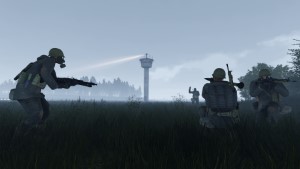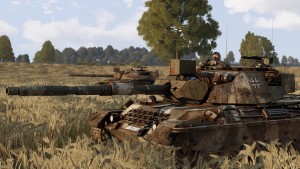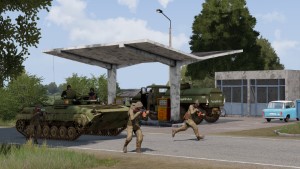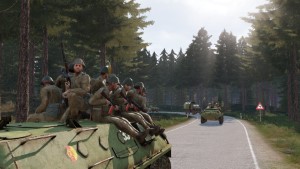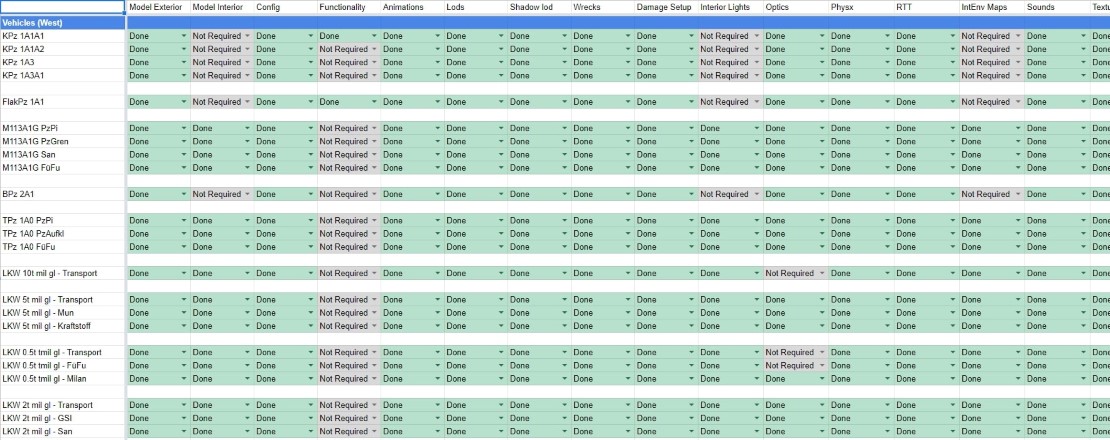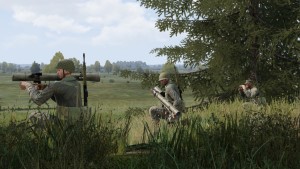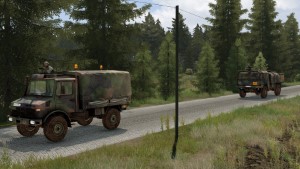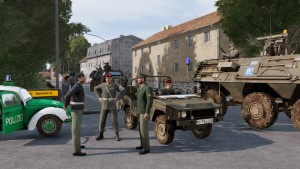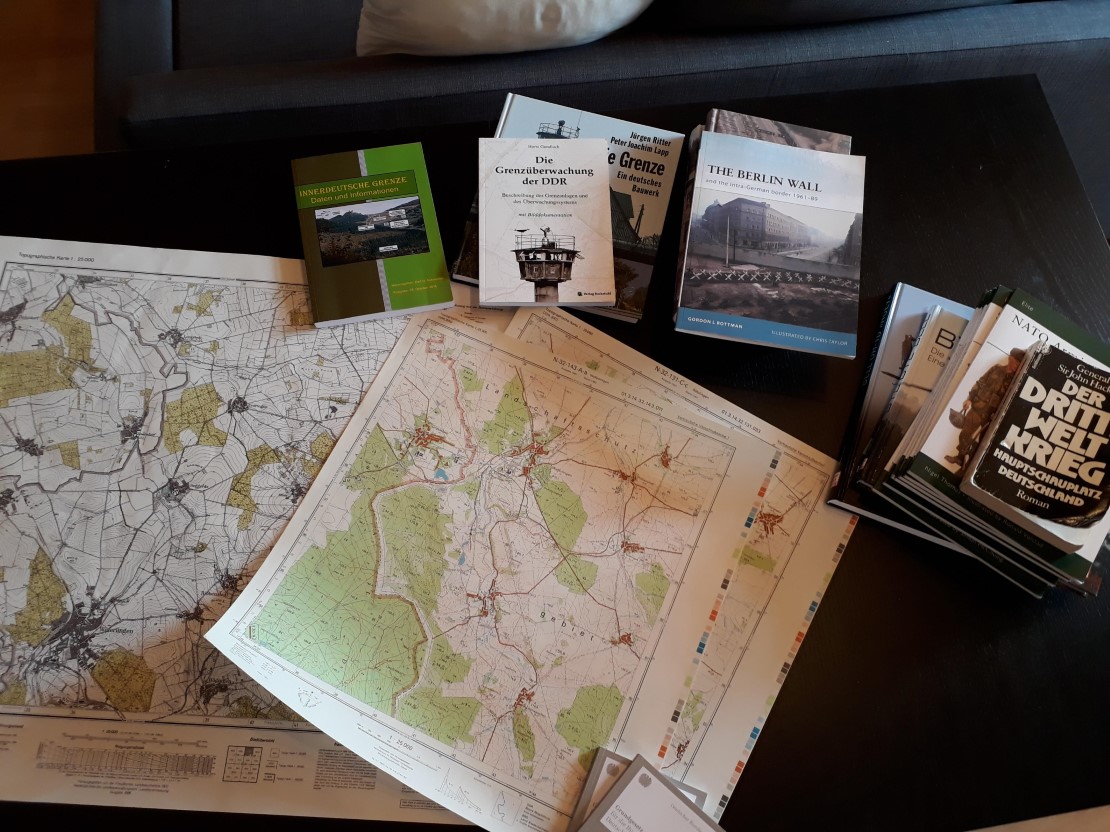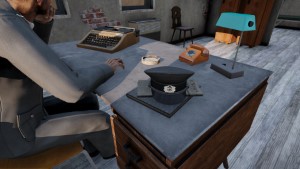Some years ago we started our 'Report In!' interview series to tell you a bit more about what it's like to develop games at Bohemia Interactive. With the first Creator DLC (Global Mobilization - Cold War Germany) about to release (April 29), we felt it would be a good reason to return from hiatus, and question its two third-party developers, who together make up the Vertexmacht team. This special 'Report In!' gives you a more personal perspective and a more detailed look at the way they go about their work.
INTRODUCTION
Tell the people a little about yourself. Who are you, and what do you do? And what is your favourite BI game or mission?
Lars Transfeld (GalComT): What's to know about me? I really enjoy Tanks, Trains and Lego, not necessarily in that order. My favorite BI game is Operation Flashpoint, I wouldn't necessarily want to play it anymore as it is indeed quite dated, but it had a large impact on my life in more than just one way, and I have to give it credit for that.
Julian Sänger (Mondkalb): I enjoy creative work very much. This project was the perfect opportunity to branch out with creative work: It allowed me to dive into character art, story writing, voice acting and directing as well as further deepening my understanding of 3D animation work, development of tools and also to try my hand as a musician.
My favourite game would also be the original OFP. I see GM as a direct result of a chain of events initiated by playing the OFP demo in 2001.
And can you give us some random facts about yourself?
Lars: I once accidentally invaded Poland.
Julian: I spent a week in Paris impersonating a chemistry PhD student.
MOBILIZE
How did the Global Mobilization project start? And how/when did you form your team?
Julian: There is no exact starting date for GM. The first time the name Global Mobilization was spoken must have been sometime around 2014, so if you absolutely need a date, I’d say 2014.
The project evolved into what it is now over a long time and has seen many redesigns. Originally, it was Lars wanting to create German Army addons for the freshly released Arma 3. In a bit of a revival of our mod-cooperation days from the Arma 2 era, we decided to combine efforts: his vehicles and weapons plus my terrains to become a continuation of the Arma 2 projects into Arma 3.
From there this idea then changed into becoming a sort of platform serving as the basis for multiple nations and factions. That’s why we chose to call it Global Mobilization. It is to provide basic functionality and standards as a bigger framework for mods that is easy to use for anyone who wanted to join in on this standardisation for addons.
Lars: As Julian said, the root for GM is situated somewhere amongst the terrain and buildings addons created by him, and the German Armed Forces Mod I created in the Arma 2 days. Originally, I never planned on porting any of the Arma 2 GAF content to Arma 3 as, honestly, I was not too thrilled about Arma 3 in the beginning – mainly because of its semi-futuristic setting I wasn't able to fully relate to, and creating a full conversion for Arma 3 to make use of the new sandbox but not the content was too big of a task for just myself. Somewhere around that time, in one of our endless Teamspeak sessions while playing wargames, one thing came to another and we agreed to somehow tackle this total conversion. We never called it a total conversion, but in retrospect that's exactly what it was and is.
What made you choose this particular setting?
Lars: To be honest, there was no real choice. The timeframe between the early 80s and mid-90s was a very interesting timeframe with what I believe are the most iconic military vehicles to date. Vehicles such as the Leopard 1, M113, Marder and Luchs – just to mention some of my personal favorites – were in their prime, and the conflict those steel beasts would have seen action in was a potential Cold War gone hot scenario.
In the very beginning, before GM was bound to be a Creator DLC, the time frame was not set very precisely and we had content in the pipeline ranging from the late 70s all the way to the early 2000s, as we were focusing on building what we liked the most rather than creating a very specific scenario. But as GM became more and more serious, we locked it down relatively tight to the mid 80s and northern Germany. Which, for example, is one of the reasons why we dropped the Leopard 1A4 for now, as that version of the Leopard 1 was only used in the 10th Panzerdivision, stationed in southern Germany.
Given your previous and current careers, you both have quite a bit of military expertise and/or experience. In what ways is that reflected in this Creator DLC?
Lars: I think together Julian and myself have a bit more than 30 years of combined experience modding and working with the RV engine, starting with Operation Flashpoint, Arma 1, Arma 2, and VBS, as well as Arma 3, which provides us with a unique love-hate relationship with the engine and the series. This meant we did not have to spend a lot of time fighting the engine, instead, we are well aware of what is possible and what is not.
Having extensive military experience obviously helped a lot in making GM as authentic as possible and what to look out for, and I am quite confident veterans of the cold war era – and others as well – will enjoy the authenticity we are providing.
Julian: I have worked in the industry since 2011 (Lars joined shortly after and these days we actually sit next to each other during our day job), so this day-to-day experience in working with creating software features and assets was very helpful. It allowed us to keep a realistic look at the work to be done and to handle it methodically.
Lots of arcane knowledge accrued over the time that allowed us to avoid the common pitfalls of modding and keep working on the project instead of guessing and researching how to get a thing to work.
Apart from that, I spent a few years before in theatre, which provided the experience that helps me with my animation work and also directing the voice actors during their recording sessions.
How has your project benefited from being a Creator DLC?
The main benefit is probably that GM turned into a well-tested and “done” product. Without it being a Creator DLC we would have probably either released a long time ago before it was really completed, or we would have not released at all.
DEVELOPMENT
Can you tell us a bit more about the division of roles in your team? How do you collaborate and communicate?
Julian: We’re essentially two one-man-mod-teams that combined forces. Lars’s specialties are weapons and vehicles and all things related to configuration, while I took care of characters, terrain, missions and animations. But this is only the rough outline; plenty of vehicles and weapons were made by me either fully or in part as well. Summarized, I’d say we are a fully cross-functional team, where each of us could do the other’s job if we had to.
We should also mention Stefan, our silent third guy. Initially, he was part of the GM DLC project, but sadly, due to life events, he couldn’t fully commit the time required. We look forward to him returning when things clear up.
Our primary mode of collaborations is fairly simple: Spreadsheets. Those of you who followed us during the development will know about our religious use of spreadsheets. For such a small team, spreadsheets were simply the fastest way to keep track of progress across a large scope of work.
How do you go about selecting the weapons and vehicles in your package?
Lars: Our main criteria was, of course, the time frame that we have chosen, which has dictated a lot of the content we have created. But since we could not build everything we want to create for the first release we had to prioritize. For this we tried to aim for reusability of our content – essentially we asked the question: “How much ground can we cover if we make vehicle X instead of vehicle Y?”. Which, for example, led to the Marder IFV being pushed to a future release or update in favor of the M113 APC, as the M113 offers a lot more possibilities with all its variants and its usage by other nations.
How do you typically start on a new asset? How do you do research, and where do you get references?
Lars: There isn’t really a typical approach for it. The assets to be created have been set a long time ago, and it's merely a process of tackling one after the other – we tried to avoid the occasional hopping between assets. However, it usually starts with making sense of the asset that is to be built and understanding its setup and how its variants are built, as that is fundamental for effectively building these in the future without having to redo a lot of parts. We try to get as much information and reference imagery as possible from the internet or books, and hunt for the “perfect” blueprint, which typically won't be found until the asset is done. In some cases we had to send scouts out to take images of the very specific parts of the real things.
How do you decide when something is finished?
Lars: After it has been redone at least 3 times. The Leopard 1 that is now part of GM is the 4th iteration of the Leopard that I have built. Rumors have it that the 7th iteration of a Luchs reconnaissance tank is floating around somewhere in the GM dungeons.
Jokes aside, we used a spreadsheet to track the progress of each and every asset, with a column for each part that needs to be tackled – such as exterior model, interior model, basic config, and damage setup, etc. In total, 27 items need to be done on each asset before they are deemed complete. In the end, each asset went through intensive testing to make sure everything is ready for release.
Obviously, as perfectionists, we sometimes had problems deciding when something is done, as there is always that one bit that could be improved. Even now, with GM being so close to a public release, I would still be able to sink a few more years into the individual assets to bring them closer to perfection. This, however, also meant that things we could not get working reliably enough for a paid product – beyond what Arma players are used to – ended up being cut from the first release. The most prominent victim of this being the Biber Bridge layer.
GETTING PERSONAL
What would you say was the most challenging about developing Global Mobilization?
Julian: The sheer amount of work that we scoped out. GM grew from a hobby project into a serious effort and needed strict discipline and dedication to achieve. Once it became the main focus for us as a Creator DLC, almost every other aspect of life had to take a back seat while we worked on what became a second full-time job.
Lars: I would say the most difficult thing was to somehow balance work, GM and family. Especially the last year, after all signals were set towards GM becoming an official DLC of some form or shape, was very demanding. Working 8 hours during the day, coming home, having dinner, taking the kids to bed, and working another 6-8 hours on GM before finally giving in to get a bit of sleep was very tough for an extended period of time. Thankfully, my wife was understanding and very supportive.
If there's only one thing you could point out, what are you the most proud of, and why?
Julian: The Weferlingen terrain was created using actual map sources from the East German military that were heavily classified at the time. Particularly, the Iron Curtain was recreated as accurately as possible within the Arma platform to show how it was then and there.
I think of it now as a digital 3D-museum covering a not widely known piece of history.
Lars: The level of detail and the consistency of the look and feel across all GM assets, and that all of it was achieved by “2.1” people.
Why should people who are not from Germany play this Creator DLC? Is there anything in particular you hope they'll get out of it?
Lars: We are hoping that not only German players are interested in a cold war scenario set in the center of Europe.
In fact, we are hoping that people will not just see GM as a “German Army” DLC, but as the centerpiece of what we hope will one day become a series of cold war era army addons. Over time, we are planning to add more nations to the lineup – the first release/addon is covering the West and East German armies as well as some Danish content. In addition to that, one of our main targets was to make GM as mod-friendly as possible so that mod creators and communities out there can make use of our content very easily through simple config/retex addons. And by doing so, make GM interesting for more than just the Arma player base interested in German content.
Julian: GM definitely fills a niche in theme and setting. Taking the route through the Creator DLC meant that this niche could be explored with more effort and dedication than otherwise possible.
Both West and East Germany were defining factors during the Cold War, but games usually focus on the two superpowers, with the remaining NATO and Warsaw Treaty nations taking a back seat – that is if they appear at all.
GM reverses this with a fresh new take and view on a theme that hasn’t been at the center of video games before in this form and with such dedication.
GENERAL QUESTIONS
And after a long day of work and creating new Arma 3 content, what do you like to do to relax and unwind?
Julian: Now that GM is done I have a year’s worth of new games that I need to catch up on. That’ll keep me busy for a while.
Lars: Usually by sleeping.
What would be your top tip for other developers out there?
Lars: Work smarter not harder. Automate as much as possible, use texture templates, config macros, essentially avoid having to do the same thing more than once if it can be automated away.
Julian: Start with a small project to learn the tech and procedures. Usually, you’ll end up doing a thing three times. First to figure out how to do it, second time to solidify the workflow and the third time to actually produce the product.
Also, as Lars already explained: there is no time for bad tools. This GM release is a massive amount of work that couldn’t be done without efficient automation of processes and methods.
Oh, and you must definitely know what tools you have available! Click every button once in your application of choice to see what it does before you even start work. This way you’ll learn what tools you have at your disposal to work with. If you don’t know you even have a tool, then you can’t use it. So avoid not knowing at all costs.
A galactic warlord arrives on Earth to exterminate half of all video games. As protector of the Pixel Realm, you can use your superpowers to guarantee the safety of Arma and one other game. Which will it be?
Lars: Most definitely Transport Fever, there can never be enough trains.
Julian: Purely judging by my played hours I would have to pick Wargame: Red Dragon.
